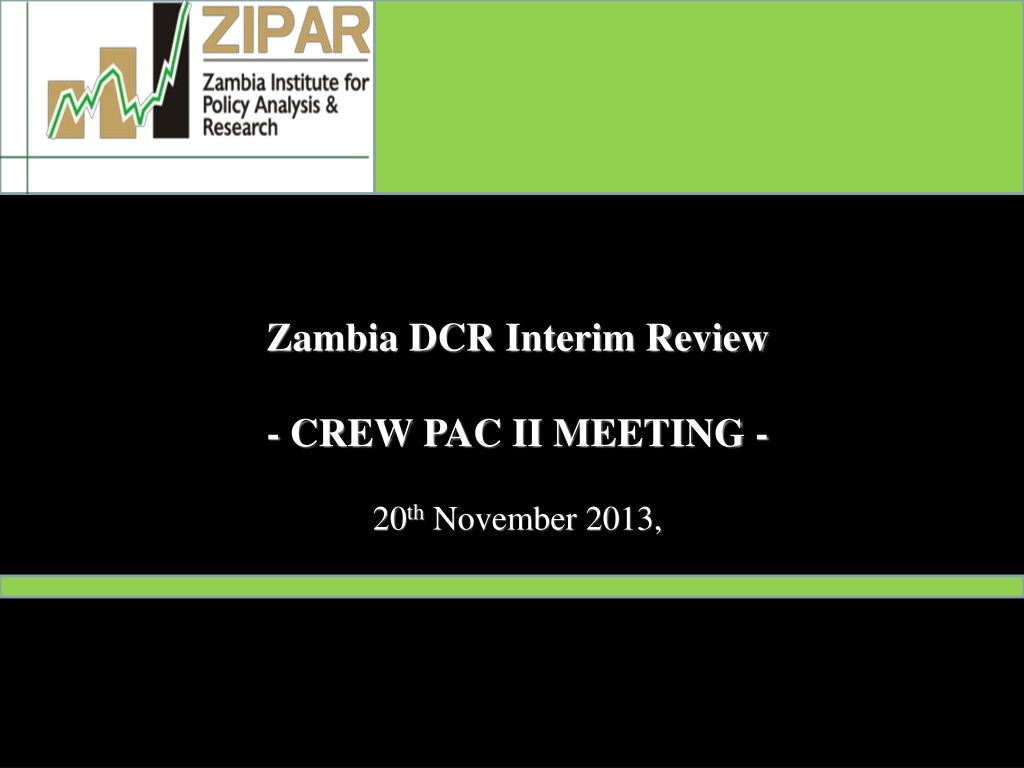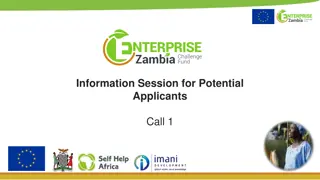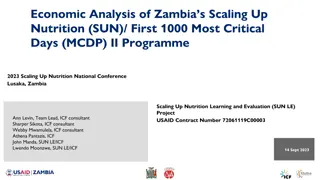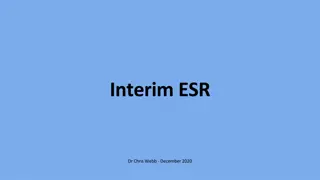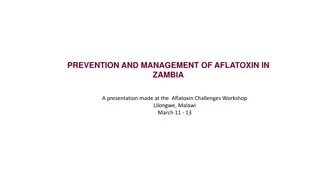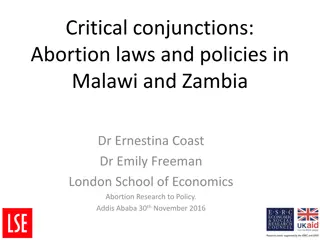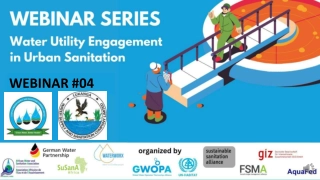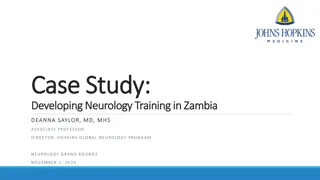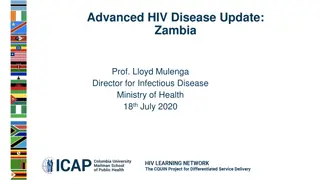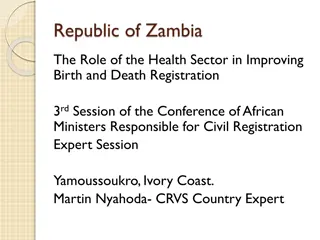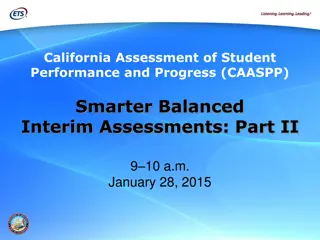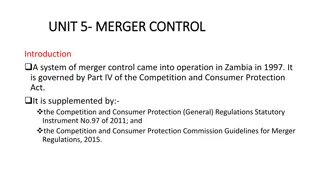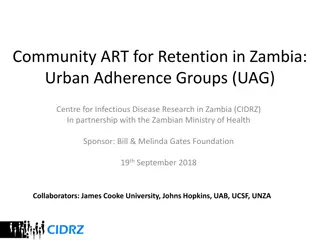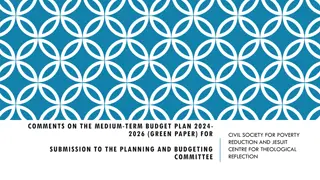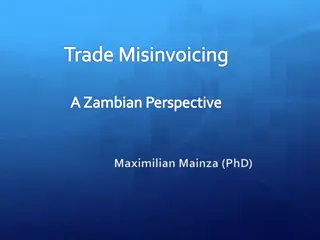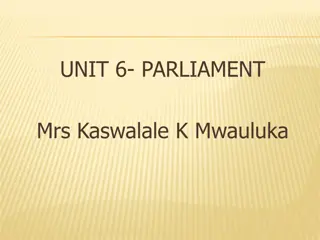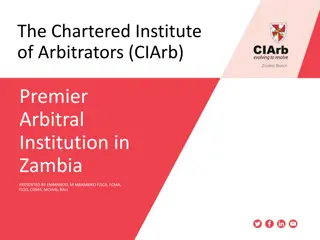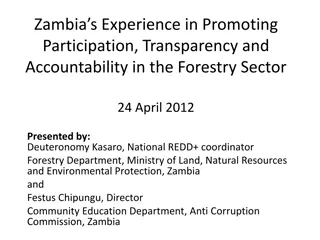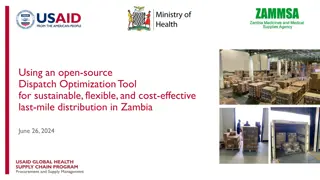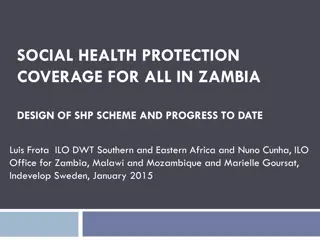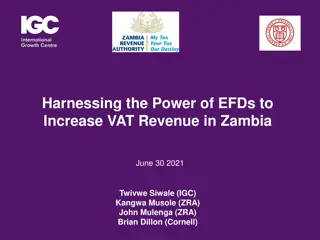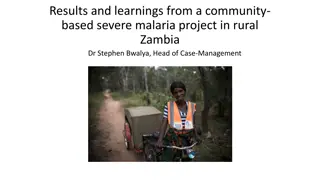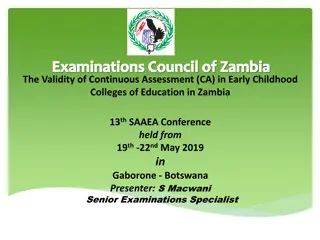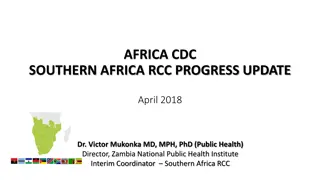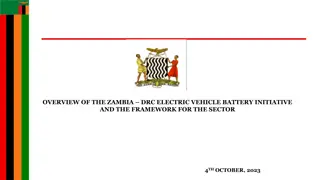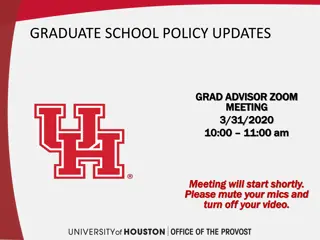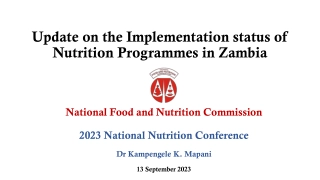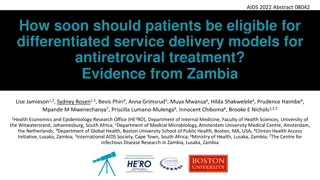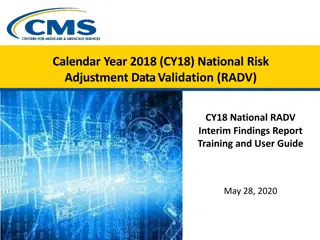Zambia DCR Interim Review - Policy and Market Analysis
In-depth analysis of policy, regulatory, and market reforms in Zambia, focusing on staple food sectors such as maize. Discussions include the impact on consumers and producers, stakeholder identification, competition issues, state interventions, export/import restrictions, and more.
Download Presentation

Please find below an Image/Link to download the presentation.
The content on the website is provided AS IS for your information and personal use only. It may not be sold, licensed, or shared on other websites without obtaining consent from the author. Download presentation by click this link. If you encounter any issues during the download, it is possible that the publisher has removed the file from their server.
E N D
Presentation Transcript
Zambia DCR Interim Review - CREW PAC II MEETING - 20thNovember 2013, 1
OUTLINE OUTLINE Extensive though not exhaustive account of policy, regulatory and administrative reforms 1. Identified on the basis of the nuanced belief about their ramification for consumers and producers welfare 2. Prepared under the guidance of CUTS Int l and Nathan Associates Inc. 3. Identifies key stakeholders, consumers, producers, available data and missing data, 4. 2
STAPLE FOOD SUB STAPLE FOOD SUB- -SECTOR SECTOR Analysis based on major components of the supply chain. 1. Production & Input Supply; Procurement; Processing; Marketing and Distribution Maize and maize meal Marketing Reforms and Welfare Concerns 2. Passing of the FRA Act 1996 and subsequent establishment of the Food Reserve Agency Objective: To administer national strategic food reserve Amended in 2005 to include import, sell or trade in a designated commodity. 3
STAPLE FOOD SUB STAPLE FOOD SUB- - SECTOR SECTOR Issues for competition a. FRA is huge, it is likely to distort the size distribution in the market. Price Setting, Availability and Consumer/producer welfare Size distribution of players Market structure and Behavior b. It s public nature has consequences on the regulatory enforcement 4
STAPLE FOOD SUB STAPLE FOOD SUB- -SECTOR Farmer Input Supply Program (2009 to date) - pure case of policy and administrative reforms (mainly dismal) SECTOR 3. Heavy state intervention state might be driving the private sector out of the market. Seed and fertiliser distribution channels: Number of players, vested interest groups, regulatory capture or leverage Uncover the political economy of rent seeking and its effects on policy commitment in the long run. National Cooperative Development Policy as a critical strategy to empower small scale 5
STAPLE STAPLE FOOD FOOD SUB SUB- -SECTOR SECTOR Export and Import Restrictions 3. Exporting and importing of maize in Zambia requires a licence that is issued by MoA 4. Due to global grain deficits, export bans have been common e.g in 2007/2008 marketing season FRA was issued with export permit for 226,000, MAZ issued with 50,000, GTAZ got permit for 50,000 and ZNFU had a permit for 50,000 tons and there is a balance of 50,000. 5. In some years, there have been more free trade involving private traders both exporting and importing, 6. Mainly Zambia is used to export maize to DRC Congo. 7. 6
STAPLE FOOD SUB STAPLE FOOD SUB- -SECTOR SECTOR In case of import ban, the domestic volume will be lower and can lead to higher prices for consumers- consumers lose out on welfare Export ban on the other hand dampens domestic producer prices- producers lose out The Competition and Consumer Protection Act No. 24 of 2010 and WTO rules 7
STAPLE FOOD SUB STAPLE FOOD SUB- -SECTOR SECTOR Subsidy System (Reduction and/or removal of fertilizer) Reform has no impact on number of players Reform has no impact on household income Desk research/analysis Market Structure Desk research/analysis / Primary interview Producers Various Years Reform has no impact on productivity of maize Yield levels from crop forecasting survey(CFS), Post harvest survey (PHS) and supplemental surveys (SS) Producers 8
STAPLE FOOD SUB STAPLE FOOD SUB- -SECTOR SECTOR Export bans/licenses/quot as and import bans/licenses Reform has no impact on maize meal prices Desktop review Consumers Reform has no effect on substitute goods Ask consumers (Pr) about quantities consumed when maize was in shortage Various Market, Consumers Collect data on prices from CSO and Jesuit centre for theological reflection (JCTR) 9
STAPLE FOOD SUB STAPLE FOOD SUB- -SECTOR SECTOR Data collection will involve a. both primary and secondary data. b. questionnaires for producers, consumers and other players in the market c. focus group discussions d. desk review of literature in government departments and ministries. Perception surveys for consumers, farmers and other producers In-depth interviews for cooperatives and other interest groups 10
PASSENGER TRANSPORT SUB PASSENGER TRANSPORT SUB- -SECTOR SECTOR Intra-City- minibuses carrying up-to 26 passengers. cover a radius of 60km. In this study, two routes to be analysed are: - a. a. Town Centre Chelstone (Munali Constituency); and b. Town Centre Matero (Matero Constituency). preferred because they host the largest population sizes in Lusaka. 11
Inter-City - serviced by buses with up-to 76 passengers covering above 60km radius. a. Lusaka Chipata route; and b. Lusaka Kitwe route. Preferred due to highest number of buses per day. on average eight (8) buses leaving Lusaka for Chipata and ten (10) leaving Lusaka for Kitwe 12
PASSENGER TRANSPORT SUB PASSENGER TRANSPORT SUB- -SECTOR SECTOR Liberalization Policy (Transport Policy and Road Act No. 11 of 2002) 1. ROADSIP (Road Traffic Act No.13 of 2002) 2. Road Traffic Act No. 11 of 2002 3. Competition and Fair Trading Act, Cap 417 and its Laws and Regulations 4. Toll gates charges 5. 13
PASSENGER TRANSPORT SUB PASSENGER TRANSPORT SUB- -SECTOR SECTOR Entry conditions licensing, formalization and informality 1. Price setting-fare determination, distance-fare charges, etc. 2. Quality of service and road safety as 3. Freedom of consumer choice 4. 14
Thank you! 15
